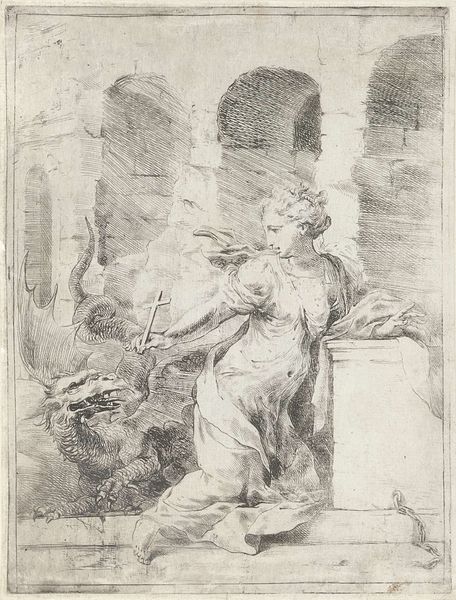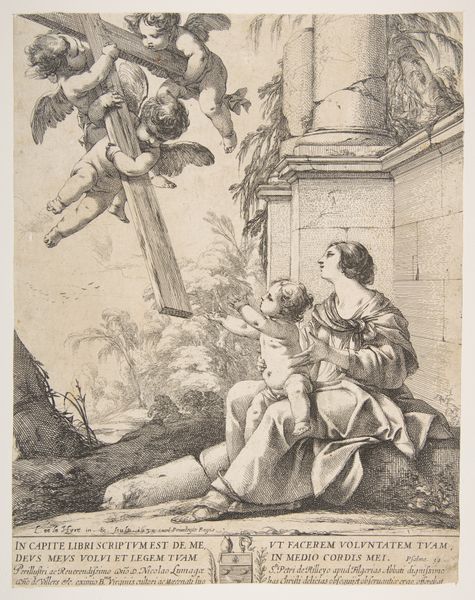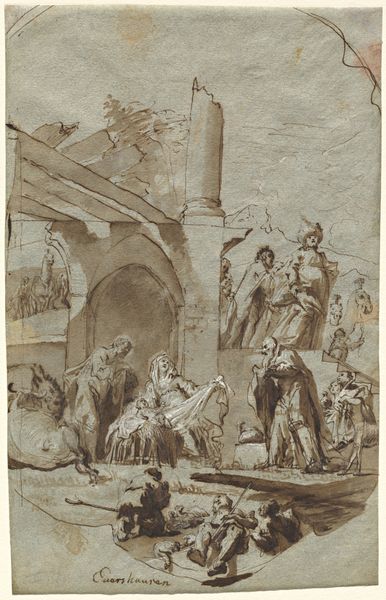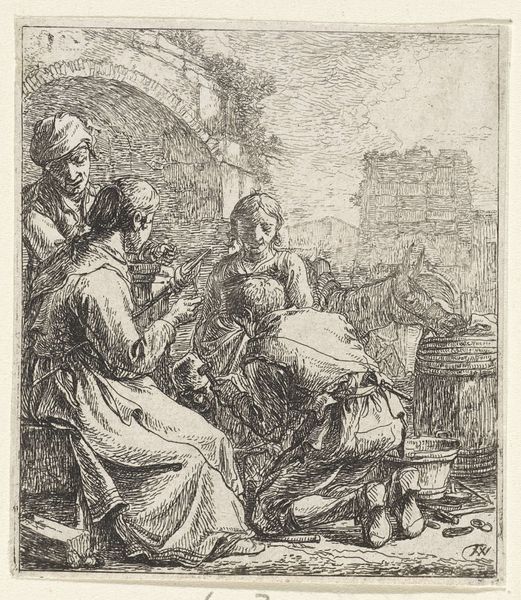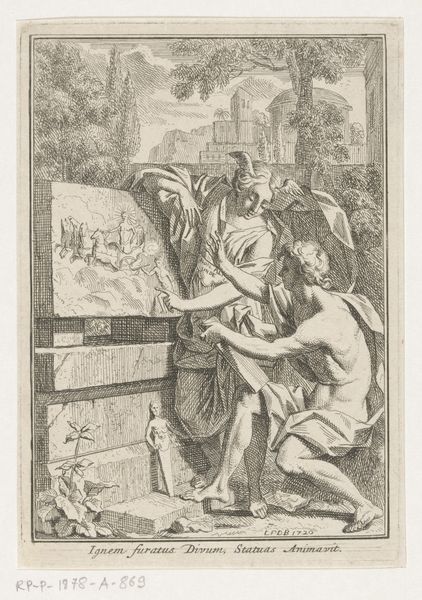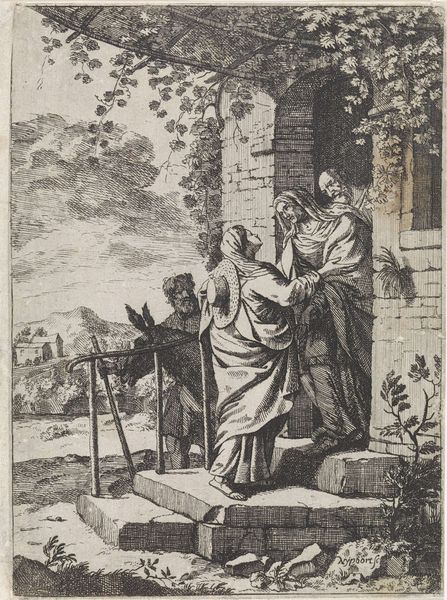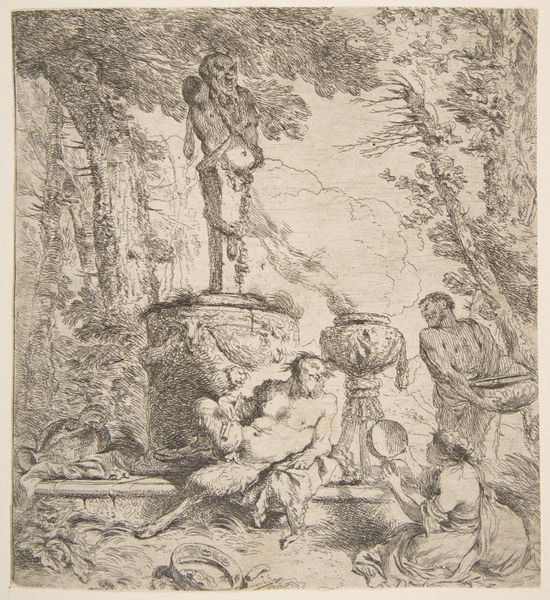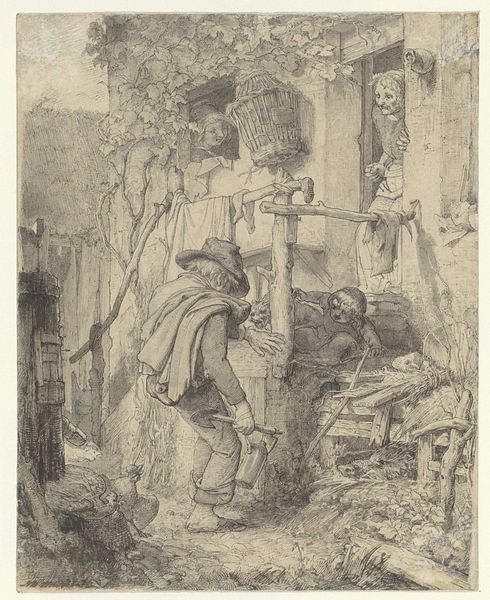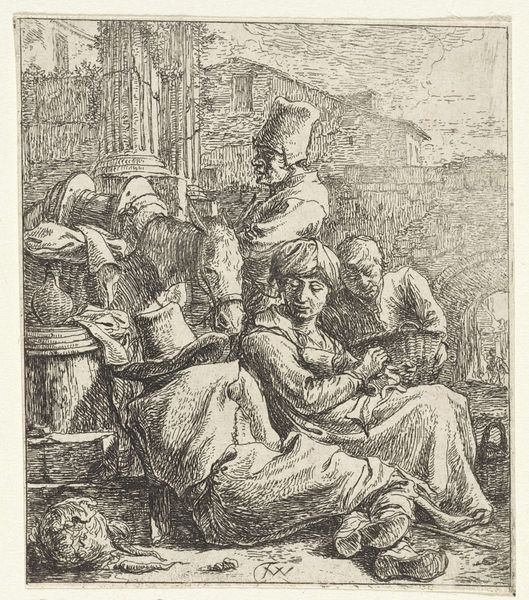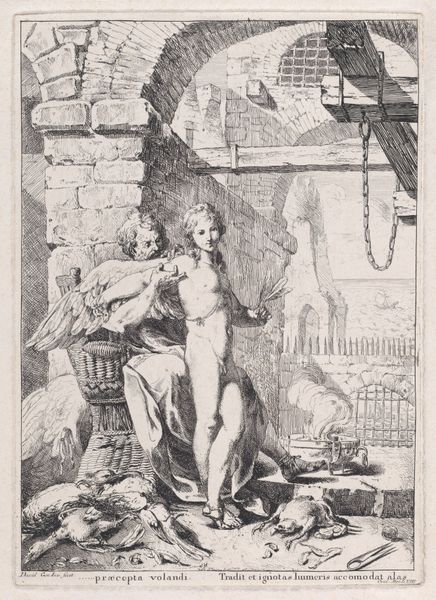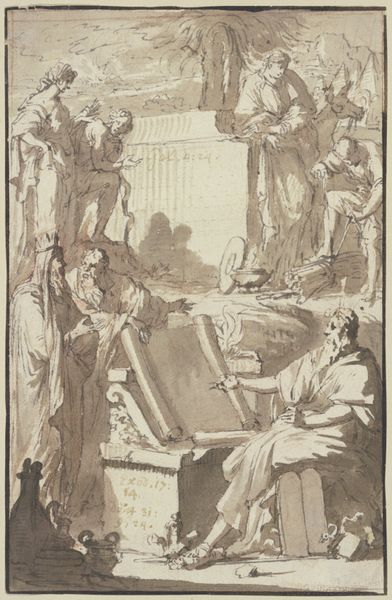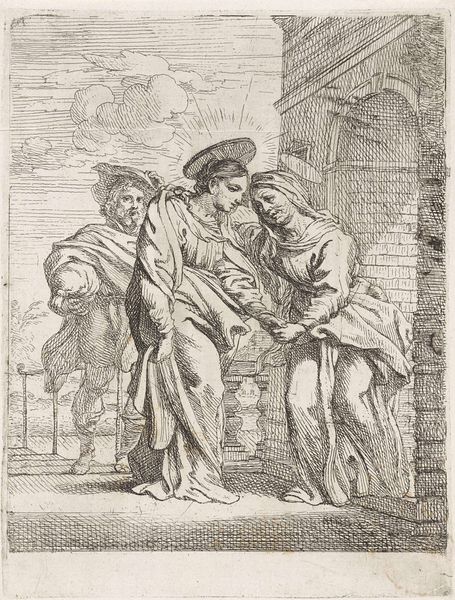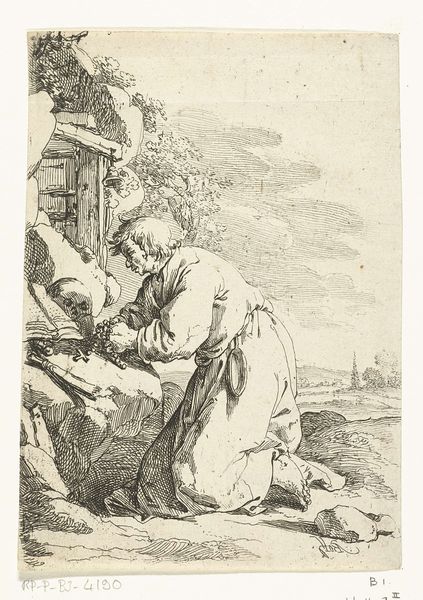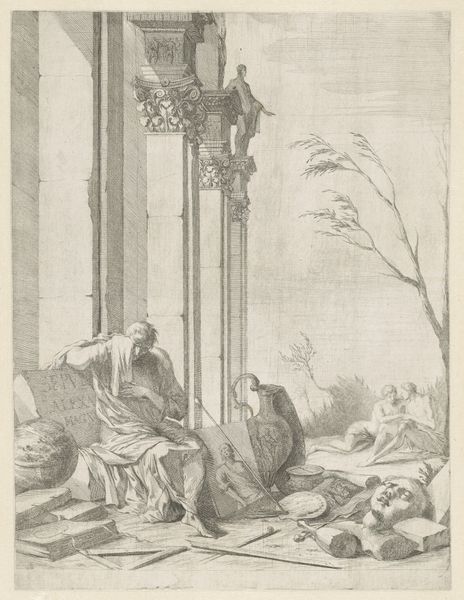
drawing, print, etching
#
drawing
# print
#
etching
#
landscape
#
academic-art
Dimensions: sheet: 8 3/16 x 6 1/4 in. (20.8 x 15.9 cm) plate: 7 5/8 x 5 9/16 in. (19.4 x 14.2 cm)
Copyright: Public Domain
Charles Hutin created this etching, "Boy Sketching Ruins," sometime in the 18th century. The composition arranges a young artist amidst classical ruins, rendered in fine, delicate lines. The scene is bathed in a soft light, achieved through subtle variations in hatching and cross-hatching, evoking a sense of nostalgia. Hutin’s choice of subject is steeped in the artistic conventions of his era, where ruins symbolized both the passage of time and the enduring legacy of classical civilization. Note how the artist uses line and form to construct a dialogue between the present—the boy sketching—and the past—the crumbling structures. This contrast invites reflection on themes of artistic creation and historical memory. Consider the formal qualities of the work: the balance between detailed areas and open space; the linear precision versus the textural roughness of the ruins. These are not just aesthetic choices, but reflect Hutin’s engagement with contemporary philosophical ideas about art, history, and the human condition. This print functions as a meditation on the act of observing, interpreting, and preserving cultural heritage.
Comments
No comments
Be the first to comment and join the conversation on the ultimate creative platform.
